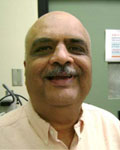30 Oct Why do “Smokers Drink and Drinkers Smoke” ?
MedicalResearch.com Interview with:
Mahesh Thakkar, Ph.D.
Associate professor and director of research
School of Medicine’s Department of Neurology
Missouri University
Medical Research: What is the background for this study? What are the main findings?
Dr. Thakkar: It is well known that “smokers drink and drinkers smoke.” The question is why. In our previous research, we had observed that alcohol promotes sleepiness by inhibiting the brain region known as the basal forebrain. So we asked, “Does nicotine override alcohol-induced inhibition and activate the basal forebrain?” This study was performed to address these questions. The main finding of this study is that nicotine, when co-used with alcohol, attenuates alcohol-induced sleepiness by overriding alcohol-induced inhibition of the basal forebrain region.
Medical Research: What should clinicians and patients take away from your report?
Dr. Thakkar: For clinicians and patients, it is important to understand that drugs such as nicotine and/or alcohol may have profound effects on brain regions that are regulating sleep, which is likely to cause other problems.
Medical Research: What recommendations do you have for future research as a result of this study?
Dr. Thakkar: This is our first step. The next step would be to identify cellular/molecular mechanisms that may play a role in nicotine and/or alcohol addiction. Once we understand and identify the cellular/molecular substrates, then we can develop efficacious treatment strategies that will help us prevent and/or treat nicotine/alcohol addiction.
Citation:
Rishi Sharma, Shafi Lodhi, Pradeep Sahota, Mahesh M. Thakkar. Nicotine administration in the wake-promoting basal forebrain attenuates sleep-promoting effects of alcohol. Journal of Neurochemistry, 2015; 135 (2): 323 DOI: 10.1111/jnc.13219
[wysija_form id=”5″]
Last Updated on October 30, 2015 by Marie Benz MD FAAD

